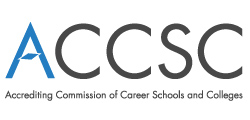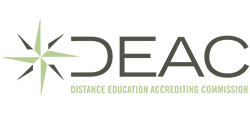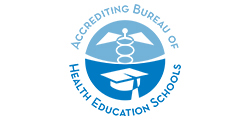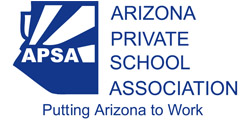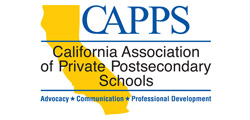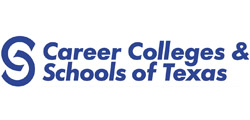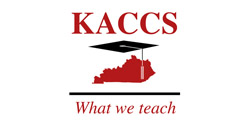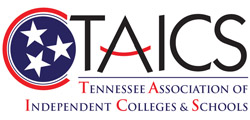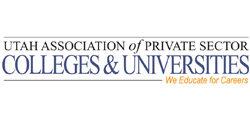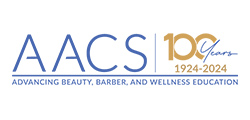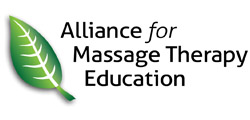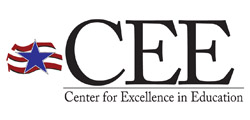Badge Evidence | Completed Courses (4 Hours Each)
ACCSC101Fulfilling the Standards of Accreditation: Administration
This course "pulls back the curtain" for schools to help them better understand the principles and purposes of the ACCSC Standards of Accreditation. ACCSC101, along with the accompanying course ACCSC102, lays out the standards in line with the way schools are typically structured to better help you comprehend the important relationship between each standard and each aspect of running a compliant, accredited school. This course addresses the standards on the administrative side of your school, such as standards that relate to operations, admissions, and financial aid.
ACCSC102Fulfilling the Standards of Accreditation: Academics
This course focuses on the ACCSC Standards of Accreditation which directly tie to the academic areas and program requirements for an accredited school. The course includes information on program development and design, educational policies and procedures, faculty, student services, and educational delivery methods.
CM102Raising the Bar - Compliant Communications with Students
This course is designed for employees of all roles and levels at institutions that participate in federal financial aid programs. The course provides an awareness of prohibited acts which could adversely impact operations, and covers the requirements which must be adhered to in order to maintain good standing with state* and federal regulations as outlined in the Program Integrity rules. Emphasis is on areas of misrepresentation related to advertising and recruitment activities, interactions with prospective students and appropriate communication of disclosures and other publications.
*This course currently covers the regulations for the following states: AZ, CA, CO, FL, GA, IL, IN, KS, LA, MA, MI, MN, MO, MS, NC, NM, OH, OK, OR, PA, SC, TN, TX, VA, WA. Course participants can select specific state(s) at the beginning of the course to customize the training content to their state.
CM140Title IX and VAWA Training: Building Safer Campuses
This course is designed to assist personnel at all levels of an educational institution in the understanding of the provisions of Title IX of the Education Amendments of 1972 ("Title IX") as amended on August 1, 2024, and the Clery Act as amended in the Violence Against Women Reauthorization Act of 2013 ("VAWA"). These laws require that all individuals in an educational institution understand and comply with the laws in terms of what is prohibited behavior in relation to sex-based harassment and/or sexual violence, and what steps are to be followed when such prohibited conduct occurs. This course gives the participants information about the laws, as well as procedures to follow, to provide for the rights of all individuals under the laws. It also provides additional resources to assist educational institutions in continuing to build and strengthen their Title IX and VAWA policies, procedures and training throughout the year.
EC115Integrating Career Readiness Into Your Courses: Part I
This course will provide an overview of career readiness including information and activities that may be incorporated into your courses. This course, which forms Part I of a two-part series, provides details about four specific career readiness skills: critical thinking/problem solving, verbal/written communications, teamwork/collaboration, and information technology applications. Additional thoughts and resources will also be provided to allow you to consider multiple ways to assist students in developing these skills in your courses.
EC116Integrating Career Readiness Into Your Courses: Part II
This course will provide a brief review of career readiness and provide additional skills to incorporate into your courses. This course is Part II of a two (2) part series of courses. Therefore, this course will provide details about four (4) additional specific career readiness skills. These skills include leadership, professionalism/work ethic, career management, and global/multicultural fluency. Further thoughts and resources will also be provided to allow instructors to consider additional ways to incorporate these skills into their courses.
EC140Introduction to Positive Psychology for Educators
Positive psychology is the science of human flourishing and is leveraged to cultivate well-being for students, teachers, and staff in schools around the world. You'll be introduced to the tools of positive psychology to help you and your students thrive in the classroom and in life. This course is designed to help you understand the science of well-being and how to employ it for yourself and in educational settings to support well-being and academic achievement. The modules cover positive psychology's origins, and the research and application of the PERMA model, Character Strengths, and positive education.
EC150Assessment Strategies for CTE Educators
During this course, participants will learn strategies for planning and implementing assessments in hands-on classes and career and technical education (CTE) learning environments. Effective design and implementation of assessments helps ensure that all students can grow and develop as learners' empowering them to build on their strengths. Perhaps even more important, good assessments help educators design their courses. In this course, educators will learn how to view assessments as formative representations of what students know at that moment, tools to help students understand how they learn and become expert learners, and essential instruments educators can use to actively assess their own approaches and instructional practices.
EC151Creating a Safe & Engaging CTE Environment for All Executive Functioning
This course aims to help CTE educators at the postsecondary level refine their teaching practice by creating welcoming, engaging classrooms (or shops, labs, theaters, farms, studios, job sites, etc.) for all learners. Participants in this course will explore how to create safe, meaningful, and engaging learning environments. You’ll learn about how to foster creative problem solving, bring student voice and experience into the classroom, bolster student engagement, and create a dynamic, learner-centered CTE environment.
This course is intentionally designed through the lens of Universal Design for Learning, or UDL. UDL is a research-based educational approach that optimizes teaching and learning. This course will highlight UDL-aligned practices and include concrete examples of how you can apply these practices in your CTE courses.
EC152Supporting Executive Functioning in CTE
Executive functions enable learners to do the following:
- Set goals
- Plan and strategize how they will meet goals
- Manage information and resources
- Monitor and assess their progress toward goals
EC153Strengthening CTE Instruction with Clear Learning Goals
This course, designed especially for CTE educators, explores the role that goals play in learning and how they are an important part of a CTE course. Simply put, learning goals give students a clear understanding of what they are expected to know and be able to do by the end of a learning experience or unit of study. When an instructor sets clear goals for their courses, or for a learning experience, students know where they’re headed. Just as a GPS lets travelers know where they will arrive at the end of their journey, a clear goal gives learners an understanding of what is expected of them.
Universal Design for Learning (UDL) is a framework to improve and optimize teaching and learning for all people based on scientific insights into how humans learn. When a CTE teacher designs instruction using the UDL framework, they start with a clear learning goal, consider the variability of learners in their course, predict what barriers learners might face when trying to meet the goal, and then, design their instruction to remove as many barriers as possible. When teachers approach instructional design using UDL, learning environments are more accessible, inclusive, equitable and challenging for every learner. And, these equitable learning environments all begin with clear learning goals! (CAST, The Goal of UDL)
ED101Effective Teaching Strategies
This introductory course covers the essential roles of a teacher and the competencies required to be a successful instructor in an educational institution. Proven techniques and strategies for planning and preparation are presented and discussed. In addition, the course offers effective methods for conducting the first class meeting and delivering course content. This course provides a solid foundation for new instructors and serves as an excellent refresher for more experienced instructors.
ED104Class Management Strategies
This course provides methods and techniques for managing students and class activities. We start by reviewing the steps instructors need to follow as they introduce a class to new students. We then discuss strategies to effectively deal with unfocused and challenging students. The course ends by describing common mistakes made by instructors and ways to avoid them.
ED208Adult Learning Theories
When designing instruction for adult learners, it's important to consider a host of factors. This course describes the characteristics and motivations of adult learners, and the best practices and techniques for teaching them. It discusses the different theories of adult development and adult learning, and their relationships to the classroom experience. In addition, this course examines brain-based teaching strategies, the theory of multiple intelligences, and how the different parts of the brain are affected by new learning.
ED311Creative Teaching Tools in Clinical and Didactic Courses
Have you ever wondered how to make your health classes more "real" world? In this course, you will learn ways to get students thinking in terms of successfully applying their skills in the workplace. Utilize instructional tools and actual sample methods for teaching critical thinking in both the clinical and didactic learning environments, and share ideas that have worked for you.
EL101Designing and Developing Online Courses
This introductory course will provide you with the knowledge and skills to create successful online courses, whether for faculty-supported distance education delivery or as a supplement to classroom instruction. You will learn to design and develop online courses that have structural integrity and navigational simplicity with a focus on student-centered learning and intellectual interaction. The course covers various learning activities that are supported in an e-learning environment and describes the typical components of an online course. We will provide you with the media strategies and course design methodologies that will allow you to develop online courses in an effective and efficient manner.
EL102Online Teaching Techniques
Your degree of success as an online instructor relies heavily on several factors, among which are your level of preparedness before the date on which the course is launched; your ability to make a smooth transition into the roles and responsibilities associated with teaching in an online environment; and the effectiveness and efficiency with which you manage learners, instructional transactions embedded in the course as well as the learning environment. In this course, you will learn how to project your authority and presence into the e-learning environment, build a relationship with each learner, promote and nurture learner participation, provide informative and constructive feedback in a timely manner, minimize attrition, manage communications, manage unacceptable behavior and resolve disagreements.
EL103RTeaching Online: A Student-Centered Approach
This course will provide you with the knowledge and skills to successfully author, teach, assess, and revise online courses. You will learn to develop a course framework with consistent modules. Building an online community and constructing a dynamic syllabus are important in helping you communicate with students. You will also learn how to develop an assessment plan that includes peer and self-assessment. No online course is complete without a comprehensive revision cycle. This course will walk you through the process of "closing the loop" to create a complete revision and improvement plan for your online course. We will provide you with ideas for student-centered learning that includes activities and intellectual interactions using a variety of technological tools.
EL104Teaching and Organizing a Virtual Learning Environment
This course will provide you with basic information to teach in a virtual learning environment and understand the importance of organizing course content. You will learn about the important role technology tools play in teaching and organizing an online course. You will also learn the difference between synchronous and asynchronous learning. As the components of each are discussed, you will further identify appropriate methods, develop guidelines, organize content, and establish a pattern of teaching for each method.
EL105Online Language: Communicating with Students
This course will provide you with information to help you effectively communicate with students and encourage communication among students in an online environment. You will learn the importance of facilitating instructor-to-student (I2S), student-to-instructor (S2I), and student-to-student (S2S) communication. Technology tools play a vital role in the communication process and several are discussed in this course. In addition, discussion is also provided to help you further understand how to manage and measure communication in an online course and help students communicate effectively.
EL105ROnline Language: Communicating with Students
This course provides information to help you effectively communicate with students and encourage communication among students in an online environment. You will learn the importance of facilitating instructor-to-student (I2S), student-to-instructor (S2I), and student-to-student (S2S) communication. Digital technology tools play a vital role in the modern communication process, and several are discussed in this course. In addition, discussion is provided to help you further understand how to manage and measure communication in an online course and help students communicate effectively.
EL106Evaluating Student Learning in Online Courses
This course will provide you with the knowledge to effectively evaluate student learning in an online environment. Technology tools play a vital role in the evaluation process and several are discussed in this module. Discussion will also be provided to help you further understand how to complete formative and summative assessments, as well as the advantages and disadvantages of objective and subjective assessments. Value-added assessments are also discussed in light of how they can be completed and provide feedback for course revision.
EL107RDesigning Dynamic and Technology-Rich Learning Environments
This course outlines the main characteristics of "dynamic" course design for blended instruction and highlights effective teaching methods that facilitate the learning process. Participants in this course will be able to customize the design principles and methods presented here to suit their individual professional context.
EL108Preparing Students to Become Good Online Learners
This course will provide you with strategies and techniques to help prepare students for the online environment. To do so, you must also assess your strengths and weaknesses as an online instructor. As you help students assess their readiness for online learning, you are also preparing them for the expectations and realities of the online environment. By identifying students' strengths and weaknesses, you can provide guidance to help them achieve the learning outcomes. This course not only notes the necessary technical skills, it also discusses non-technical skills as well as techniques for successful learning and helping students develop their online persona.
EL109Using Rubrics to Enhance Online Learning
This course will inform you about the purpose of rubrics and will provide you with the techniques to develop rubrics as an assessment tool for student performance, processes and products. This course will explore types of rubrics, the role rubrics play in assessment, as well as the use of rubrics in evaluating elements of your online course to ensure your course is truly student-centered.
EL113Active Learning in an Online Environment
This course will provide you with a basic overview of the background and history of the popular instructional method called active learning. This method differs from traditional educational methods such as the lecture model. Active learning has a definite place in education especially in the online learning environments. It is used to support teaching outcomes like critical thinking skills, interpersonal skills and knowledge acquisition that all instructors wish for their students. However, active learning it calls for a change of attitude on the part of students and the instructor in order to be successful. But the advantages far outweigh the disadvantages as it can make students enthusiastic about learning. Learn about this brave new world of teaching and learning for the next generation.
EL115Gaming and Simulation in Online Learning
This course will provide you with strategies and techniques to immerse students in an interactive environment that will incorporate gaming and simulations to introduce, engage, and reinforce online learning. This course will begin with definitions of gaming and simulations as a tool for online learning and will provide guidance to evaluate, implement, and assess the effectiveness of games.
EL117Understanding Personality Traits of Online Instructors and Learners
This course will provide you with an overview of online instructors' and learners' personality traits. Participants will be provided with information about the traits themselves, as well as how to identify such traits, utilize them, and develop lessons to reach all students.
EL141Engaging Online Learners
This course will explore the online learning landscape and how to ensure learner engagement remains high, even when working virtually. The course discusses various aspects of online education, as well as discussing techniques for both social and motivational forms of engagement and how to apply them appropriately in courses.
The goal of this course is to help develop a better understanding of the topic and produce tangible resources to help implement plans, strategies, and ideas at your school. In addition to lecture videos, links to possible resources, and assessments, you will be able to utilize the Journal and Learning Activities. Take advantage of a method that best works for you.





